The Concise History of the Crusades
The Concise History of the Crusades
Third Edition
Thomas F. Madden
ROWMAN & LITTLEFIELD
Lanham Boulder New York Toronto Plymouth, UK
Published by Rowman & Littlefield
4501 Forbes Boulevard, Suite 200, Lanham, Maryland 20706
www.rowman.com
10 Thornbury Road, Plymouth PL6 7PP, United Kingdom
Distributed by National Book Network
Copyright 1999, 2006, 2013, 2014 by Rowman & Littlefield
All rights reserved . No part of this book may be reproduced in any form or by any electronic or mechanical means, including information storage and retrieval systems, without written permission from the publisher, except by a reviewer who may quote passages in a review.
British Library Cataloguing in Publication Information Available
Library of Congress Cataloging-in-Publication Data
The concise history of the crusades / Thomas F. Madden. Third Edition.
pages cm. (Critical issues in world and international history)
Includes bibliographical references and index.
1. Crusades. I. Title.
D157.M33 2013
909.07dc23
2013008138
ISBN: 978-1-4422-1574-0 (cloth : alk. paper)
ISBN: 978-1-4422-3116-0 (electronic)
 The paper used in this publication meets the minimum requirements of American National Standard for Information SciencesPermanence of Paper for Printed Library Materials, ANSI/NISO Z39.48-1992.
The paper used in this publication meets the minimum requirements of American National Standard for Information SciencesPermanence of Paper for Printed Library Materials, ANSI/NISO Z39.48-1992.
Printed in the United States of America
Contents
Preface
W hen the first edition of this book appeared in 1999 the world was a different place. Then, the crusades were a faraway concept, an odd series of events in a distant and murky medieval past. Wars of religion seemed largely irrelevant to citizens of a modern secular civilization. That changed. Terrorist attacks in the United States on September 11, 2001, and subsequently in Europe and the Middle East reminded us all that there remain people in the world willing to kill or to be killed for their religion. Since then radical Muslims, known as Islamists, have continued to call on their coreligionists to take part in a worldwide jihad against the people of the West, whom the Islamists often refer to as crusaders.
For their part, many in the West worry that their actions actually do resemble those of the medieval crusaders. Significant American and European military forces, for example, remain stationed in the Middle East. And Israel, which enjoys significant Western support, is planted on soil that was once the medieval crusaders kingdom. Western diplomats and politicians are careful to avoid any mention of the medieval crusades around Muslim leaders, lest they appear insensitive or conjure up memories of the harm done by the medieval holy wars against them. Unfortunately, these sentiments and approaches are fueled on both sides by an extremely weak understanding of the actual crusades or the medieval world in which they flourished. As a result, decisionssometimes tragic decisionsare made based on deeply flawed concepts of history. By explaining just what the crusades were and were not, this book is an attempt to illuminate the complex relationship of the past to the present.
Despite a modern groundswell of interest, the crusades remain today one of the most commonly misunderstood events in Western history. That fact is all the more lamentable given the extraordinary amount of research that has been conducted on the subject during the past sixty years. Scholars know much more about the crusades today than ever before. However, most of that research is highly technical in nature and presented, appropriately enough, in scholarly journals and monographs that can seem impenetrable to those without specialized training. When the first edition of this book was published it joined only two other single-volume histories of the crusades written by professional historiansand even those two assumed a fair level of knowledge regarding medieval history. Back then an interested person who simply strolled into a bookstore looking for a history of the crusades was more likely to walk out with a book by a novelist, journalist, or ex-nun than one written with care by a scholar and based on the best research available.
The heightened public interest in the crusades after 9/11 created a strong market for new general histories, and popular authors did not disappoint. Yet many of those new works simply retold myths long ago dispelled by professional historians. It took several years before additional crusade specialists responded to the public demand. But that trickle soon became a torrent. Today there are so many histories of the crusades by scholars that they are in danger of depleting the supply of innovative names to place on their covers. Each has its own strengths and weaknesses. Yet despite the avalanche of new studies, the fundamental purpose of this book has not changed since 1999. It aims to tell the story of the crusades in a concise, understandable, and engaging manner based on the extraordinary fruits of more than half a century of modern scholarship.
Any historian who seeks to explain the crusades must first make peace with the length, breadth, and complexity of the subject. What were the crusades? When did they begin, and when did they end? What were the important milestones of the movement? Who was a crusader, and who was not?
Traditionally, authors have defined the scope of the crusades in terms of the expeditions to the Holy Land. In this, they followed the structure of medieval sources like the Gesta Dei per Francos . The crusades, therefore, begin with Pope Urban IIs call to arms at the Council of Clermont in 1095. The twin poles of such studies are the major expeditions to the East (i.e., the numbered crusades) and the history of the crusader states in Syria and Palestine. The narrative thread then weaves itself between conditions in the Levant and conditions in Europe, bringing the two together in the events of the greater crusades. From this perspective, the crusades come to a close with the extinction of the mainland crusader states in 1291. The movement, therefore, is nicely packaged in an organized fashion and in the space of two centuries.
In the past few decades, this construction of the crusades has been largely abandoned by scholars. Although traditional histories included events like the Albigensian Crusade or Baltic Crusades, neither of which was bound for the East, they did so only peripherally. Modern scholarship has rehabilitated this periphery. Most historians now accept that crusading took on many different forms; the general passage to the Holy Land was but one of them. Crusades against pagans, heretics, and enemies of the church were just as common by the thirteenth century as wars against the lands of Islam. Much of Europes crusading energy was also devoted to removing Muslims from Spain.
Beyond broadening the definition of the crusades, scholars have also reassessed the neat organization of the major expeditions. The simplicity of the numbered crusades gives the impression that Europe periodically exploded with crusading zeal, sending large armies east to fight the Muslims of Palestine. Yet the crusades were not discrete campaigns but continuous streams of armies on the march. Between the major crusades were countless smaller expeditions heading to a variety of targets.
If one accepts that the crusading movement transcends the conquest of the Holy Land, then there is no reason its history should abruptly end in 1291. During the past century, much research has been done on these later crusades. There is no doubt that crusading remained an important part of European thought well into the Renaissance and even beyond into the Protestant Reformation and Catholic Counter-Reformation. At some point, though, the historian must accept that the trail has grown cold and that crusade rhetoric has become merely that. If one insisted that the history of the crusades continued until the last crusader institution crumbled, then it would have to continue until the present so as to include the modern history of the Knights of Malta. Without a clear stopping point, it is up to the student to judge when the crusades ceased to be religious wars and transformed themselves into secular wars with religious trappings.




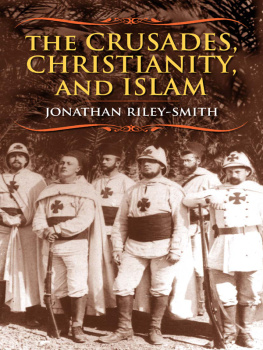
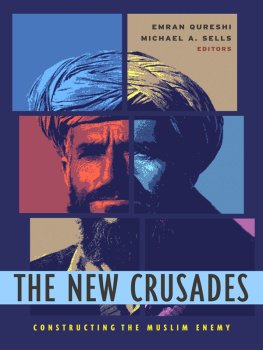
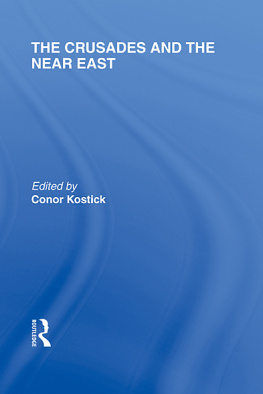

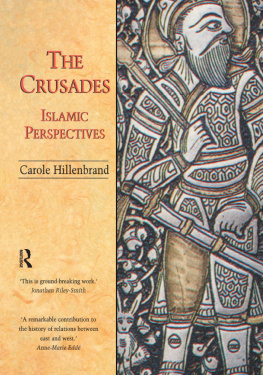


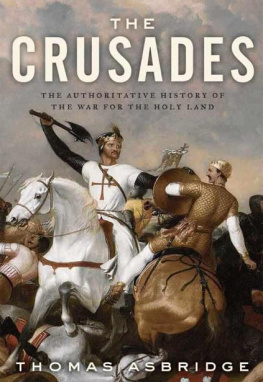
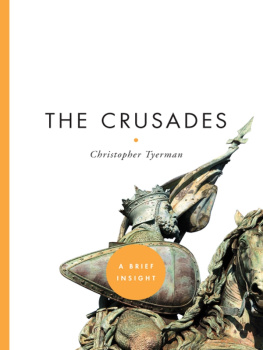

 The paper used in this publication meets the minimum requirements of American National Standard for Information SciencesPermanence of Paper for Printed Library Materials, ANSI/NISO Z39.48-1992.
The paper used in this publication meets the minimum requirements of American National Standard for Information SciencesPermanence of Paper for Printed Library Materials, ANSI/NISO Z39.48-1992.